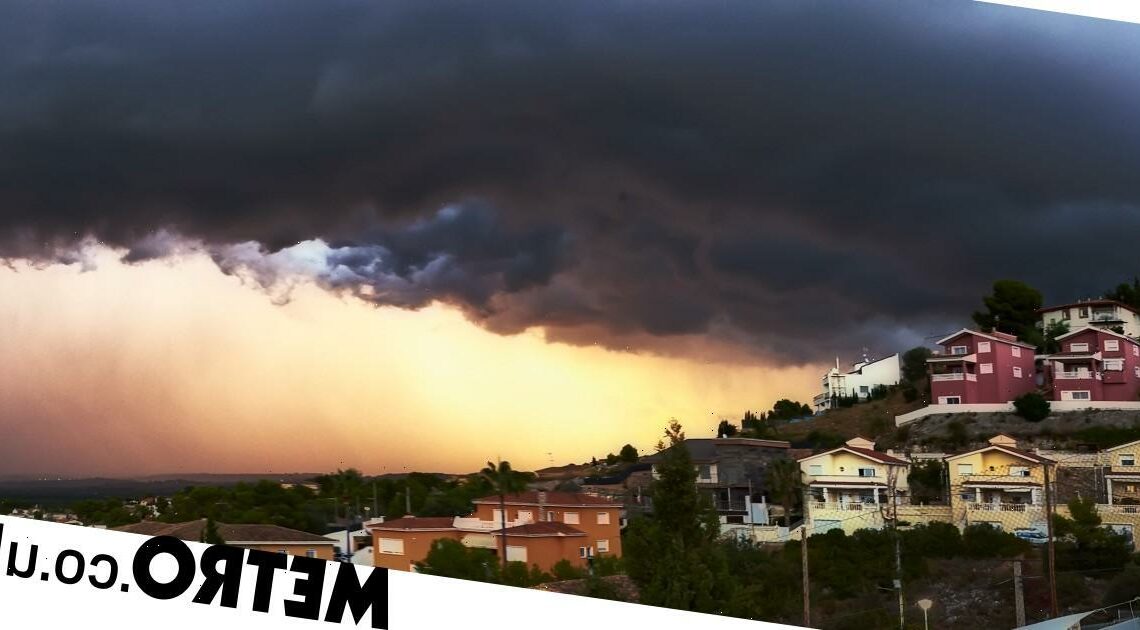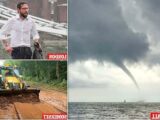
Tourists in Spain warned of rare 'tropical hurricanes'
August 16, 2022Holidaymakers have been warned to prepare for potential tropical-like ‘cyclones’ in Spain.
The rare Mediterranean storms, called medicanes, have increased in number due to the high temperatures.
They can lead to life-threatening torrential rains as well as flash floods.
Rising sea temperatures, as Spain has also witnessed, also increase the likelihood of the cyclone-like weather phenomenon.
Tourists travelling to Spain in the next few weeks have been warned that they be caught up in the medicanes.
Sea temperatures in parts of the Mediterranean coastline have reached 30°C, which is around five degrees higher than the typical summer average.
And on the island of Formentera, off Ibiza, forecasters recorded the highest temperature ever for the Balearic Islands on Saturday.
The mercury had risen to a sweltering 44.5°C amid the heatwave which is affecting countries across Europe.
‘Higher Mediterranean temperatures provide a greater source of energy for medicanes and amplify their destructivity,’ said oceanographer and weather expert Yurima Celdran.
The academic added: ‘Sea temperatures this autumn are expected to be higher than normal and if the necessary atmosphere conditions are in place, it would not be unreasonable to think the Mediterranean could harbour a medicane this year.’
As temperatures do drop the chance of storms in general could increase, experts say.
Marine ecologist Carlos Duarte told Spanish newspaper El Mundo: ‘The highest and most imminent risk this year of this wave of marine heat is that the Mediterranean is very warm, and when it cools down in autumn, can lead to extreme episodes of stormy weather.
‘In some places medicanes could occur, which may be more intense than what we’ve experienced up to now.’
Five medicanes have hit the wider Mediterranean basin since 2011.
In 2019, one medicane was accompanied by torrential rain and huge lightning storms – which paved the way for flash floods.
The provinces of Alicante and Murcia were hit hardest, and the ‘tropical cyclone’ left seven people dead.
Authorities estimated the financial cost following the devastation was around £1 million – the most costly natural disaster in Spain’s recent history.
Worries of extreme weather have been rising across the country.
Specialist weather website tiempo.com, after reporting how winds can reach speeds of up to 93mph during a medicane, added: ‘After the hottest July on record, the Mediterranean has become a warm soup with temperatures of between 27°C and 30°C.
‘It’s clear that if sea temperatures continue to rise, the possibility of the right marine conditions existing for the formation of adverse phenomenons like medicanes increase.’
Cyclone Ianos is considered to have been the last tropical-like cyclone or medicane in the region.
It impacted the eastern Mediterranean on September 17 and 18, 2020, in particular Greece.
The cyclone reached wing gust speeds of 121 mph, equivalent to a Category 2 hurricane on the Saffir–Simpson scale, before reaching land in southwestern Greece.
Five people were killed and a state of emergency declared in several islands including Zakynthos.
Get in touch with our news team by emailing us at [email protected].
For more stories like this, check our news page.
Source: Read Full Article




